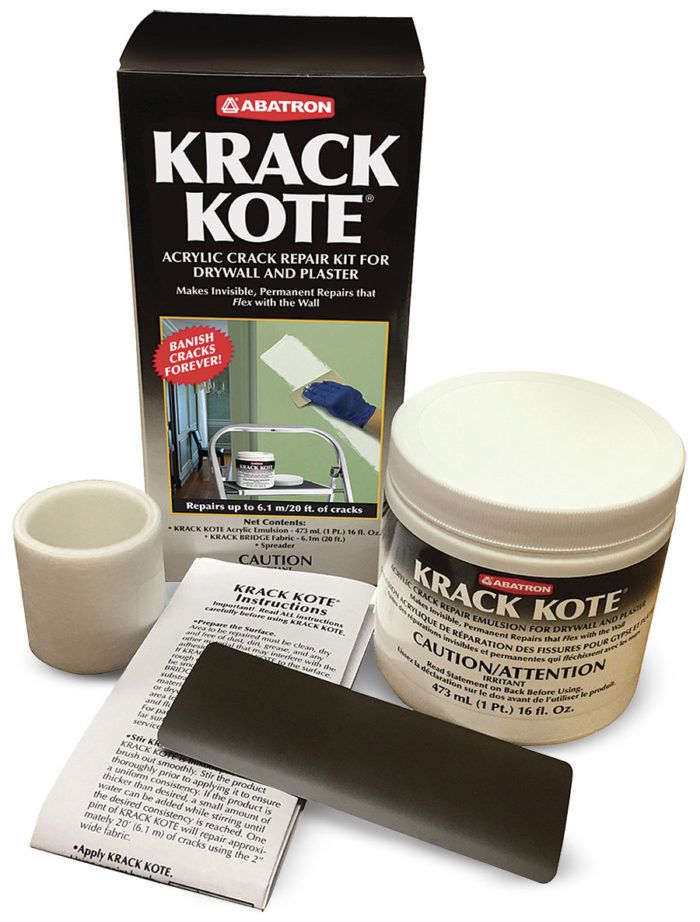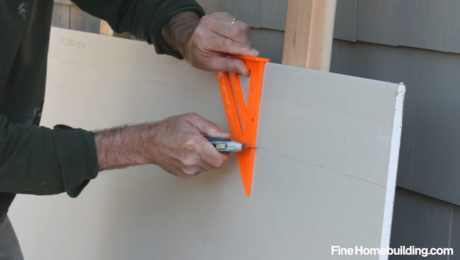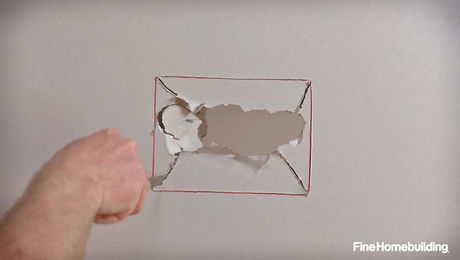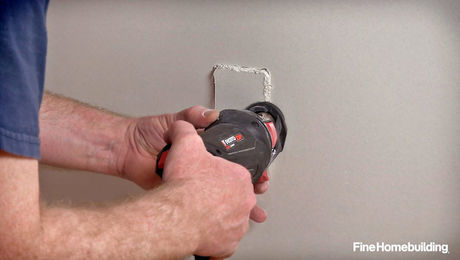
My standard fix for plaster cracks is to carve out the damage, fill the gap with setting-type joint compound, tape it, add topcoats of compound, and sand. This method is effective, but removing the damaged plaster and then sanding the new compound creates a lot of dust. The Krack Kote patching system from Abatron promises to be permanent and completely dust free. Since I’ve been using Abatron’s wood-repair products for over 20 years, I was eager to give this new product a try.
The package consists of three components: a tub of emulsion, which has the consistency of thick paint; a roll of 2-in.-wide fabric; and a 5-in.-long spreader, which is really just a of a venetian-blind slat. I tested the system on a bunch of hairline cracks in my house (a 1903 Queen Anne Victorian) that I’ve been meaning to get around to fixing for years.
For cracks that are 1⁄8 in. wide or less, the only prep work is to make sure the wall or ceiling surface is clean. After I did that, I cut the fabric strips to length. Then I applied the emulsion with a 2-in. paintbrush, coating the plaster on both sides of the crack and allowing a ridge to build up over the crack to ensure that I would know exactly where to place the fabric. Pressing the fabric into the emulsion was straightforward. Wiping it down was anything but.
My standard practice with drywall finishing and plaster patching is to tool the compound relatively smooth, let it dry, then sponge or sand it to match the surround ing surface. That doesn’t work here. The acrylic emulsion is not water-soluble when dry (and thus can’t be sponged), and it just gums up the paper if you try to sand it. My first few attempts at wiping the patch perfectly smooth were pathetic. I was ready to blame my failure on the absurd little spreader that the manufacturer provided, but switching to a taping knife wasn’t any better.
Nobody ever accused me of having a steady hand, but after much trial and error, I did get better. What worked for me was to hold the spreader at a low angle; to apply light, consistent pressure; and to wipe from one end to the other without stopping. I also used a rag to wipe the spreader clean between passes (as if it were a window squeegee), and I replaced the spreader as needed.
Abatron suggests that two coats should be sufficient to achieve a satisfactory finish. It took me three, with the third one thinned by a few drops of water. I’m sure that a skilled painter or drywall finisher would have nailed the process in no time.
There are plenty of cracks left in my house, so I’ll keep practicing with this material. I might not use it on large-scale renovations, but it seems like a great option for jobs where dust is a deal breaker, especially if lead paint is involved.
Tom O’Brien, a restoration carpenter in New Milford, Conn.
























